There is no rushing the making of caramelized onions as it is a reaction that occurs when pyrolysis occurs – the word comes from the Greek meaning fire (pyr) and separating (lysis).
When the onion is heated, the cells within the onion containing the plant sugars – the polysaccharides and disaccharides – undergo a change as the bonds forming these sugars break down into monosaccharides.
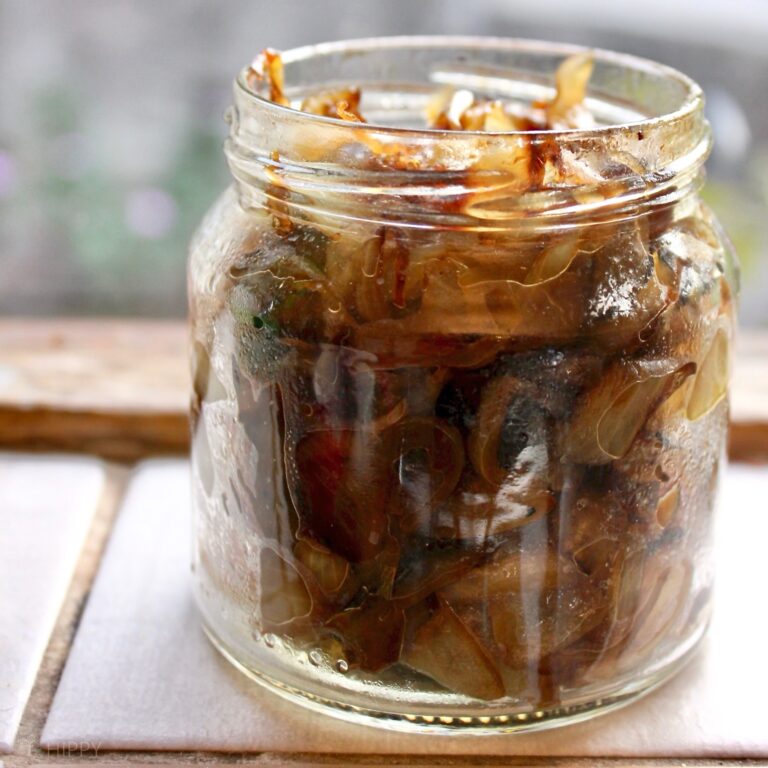
As the sugar compounds break down into simple sugars the onions take on their characteristic caramel hue and sweeter taste. This needs to be done slowly as you don’t want ordinary fried onions, but the deep rich taste of the caramelized onion.
Set aside 45 minutes to an hour to complete the caramelization process, making sure you have other things to keep you occupied in the kitchen.
I often do it while I am preparing the evening meal or have embarked on tidying out kitchen cupboards. If you really want to be mellow settle down with a book at the kitchen table and enjoy the respite.
You will need a heavy bottomed frying pan (to spread the heat evenly) that is large enough so the onions rings are not lying too deep in the pan otherwise the heat wont reach all the onions.
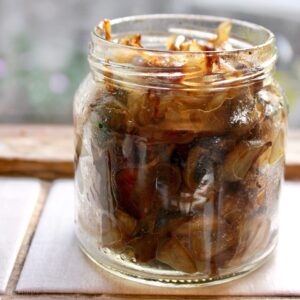
Caramelized Onions Recipe
Ingredients
- 3 medium-large onions
- 3 teaspoons of coconut oil or sunflower oil. Don’t use butter as it tends to go brown too quickly
- 1 teaspoon brown sugar optional
- dash of balsamic vinegar optional
Instructions
- Peel and slice the onions in half vertically, turn onto cut side and slice into thinnish rings – not too thin otherwise they will frizzle up with the heat and not get a chance to caramelize.
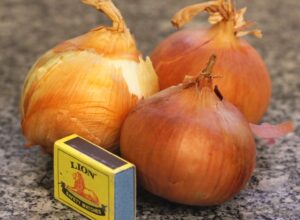
- Place the oil in the pan and heat to medium low.
- Add the onions and stir round to coat evenly in the oil.
- Check back every 5 minutes or so and stir them around making sure they are changing color slowly and not burning. If you stir too often they won’t get a chance to start caramelizing – if you don’t do it often enough they will stick and burn.
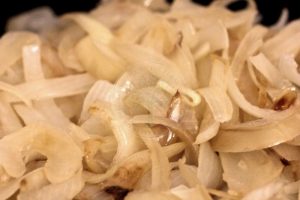
- There is no need to add sugar as the onions have enough sugar in them although some people like to add a teaspoon of brown sugar.
- The onions shouldn’t stick to the pan if you are watching them carefully but should this happen (perhaps you got too engrossed in that book), add a dash of balsamic vinegar to deglaze the pan, and continue cooking until you have that deep caramel color.
Once done, place in a glass dish or small jar and cover before refrigerating, (personally I have an aversion to putting food in plastic containers – enough plastic in our oceans!)
Caramelized onions last for around five days in the refrigerator and I like to do these and coriander pesto (link to recipe) and roasted red pepper (link to recipe) a couple of days before entertaining so it leaves less to do on the day!
I find I do have to mark the jars I want left alone with messages like” Do not eat – for Dad’s birthday party on Sunday” or something similar otherwise when it comes to the event they may be half empty! I always make extra so the family can help themselves in the meantime.
Little containers of caramelized onions look great on the popular grazing platters we love, and give a lift to cold meats and cheeses. I’m sure you have plenty of ideas, but here are a couple of places to use caramelized onions:
- Homemade pizza
- Grilled steak with blue cheese dressing
- Topping on pasta
- Gourmet burgers
- Cheese sandwiches
- Soups
- Quiches
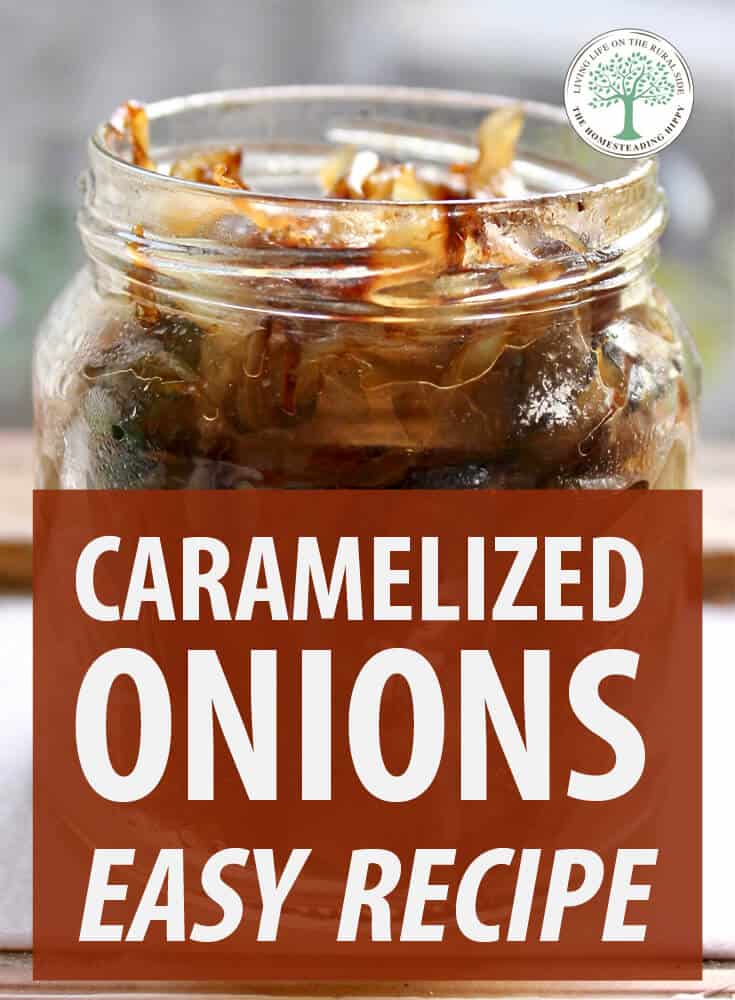

As a child I wanted to grow up and marry a farmer… simply because it was so different from my life right on the shores of the ocean. Well, I didn’t marry a farmer but a surfer instead. The urge, however, to grow stuff and make great food for a big family never left. We are on acreage with a sea view and easy access to fresh caught crayfish and other seafood – the best of both worlds. As an artist and writer I enjoy creating new recipes, tweaking traditional ones, and sharing the results not only with family and friends, but online. Mee the rest of the team at this page.
